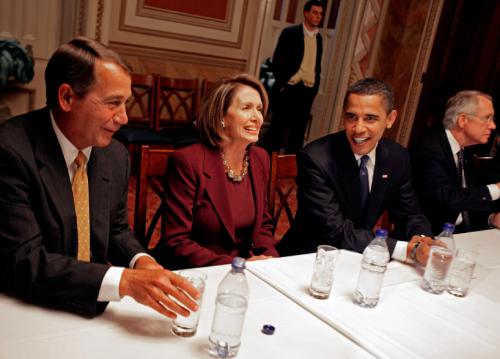3 Questions Answered About the DOL’s “Conflict of Interest Rule”
February 24, 2016 by Ebix, Exchange
Over the last year you’ve probably been hearing a lot about the Department of Labor’s proposed fiduciary rule, affectionately known as the “Conflict of Interest Rule”. And it’s no wonder considering the impact it will have on the insurance and financial industries.
The 900 page proposal isn’t necessarily something you’d want to sit down with after a long day at work and dig into. So let’s break it down.
First of all, who is most affected by this ruling? Well, if you’re part of the financial or insurance industries, you’ll most likely feel the heat. The ruling would have a direct impact on insurance agents, brokers, and advisors, as well as their partners (i.e. insurance companies).
What is the proposal actually trying to do? Let me answer this one on a high level. When you boil it down, the regulation will create a substantial change in the way retirement plan and IRA advisors will be compensated on the annuity and insurance products they recommend.
Under the current PTE 84-24 regulation, Insurance Advisors get commissions on annuity contracts, whether or not they’re considered “securities” under securities law. If the DOL gets its way, their changes will:
- Exclude compensation from revenue sharing payments, administrative fees, marketing payments, or payments from parties other than the insurance company or its affiliates.
- Insurance Advisors will need to follow “Impartial Conduct Standards” which require recommendations given do not favor the interests, financial or other, of the Insurance Advisor, insurance company, or its affiliates.
- Insurance products that are treated as securities under federal securities law will no longer be considered for exemption nor will revenue sharing and administrative or marketing payments.
- Re-define fiduciary and fiduciary investment advice (as if it wasn’t complicated enough).
- Add the “Best Interest Contract Exemption” (BICE).
The good news, BICE will allow for some things to remain an exemption. The bad news, we’ve heard it’s chock-full of new and challenging conditions that must be met first. Including the requirement that the Insurance Advisor and the insurance company enter into a provision laden contract with the IRA owner before any investment recommendations can be made. The contract must include a clear definition of an advisor’s role as a fiduciary, the commissions they are making on the annuity recommendation, and whether or not their advice creates a conflict of interest.
| With all of these changes and new information, keep in mind: To escape a prohibited transaction (PT) from selling insurance products to plans and participants, an Insurance Advisor will have to meet the requirements of PTE 84-24. In order to avoid a PT from selling insurance products to an IRA, the Insurance Advisor will have to comply with PTE 84-24 for the sale of fixed annuity contracts and BICE for the sale of variable annuity contracts (securities). |
 President Barak Obama publicly endorsed the proposal early last year on the heels of a report released by the White House Council of Economic Advisers, saying “Today’s proposal updates the rules to crack down on these conflicts of interest in retirement advice that are costing working and middle-class families billions of dollars every year.”
President Barak Obama publicly endorsed the proposal early last year on the heels of a report released by the White House Council of Economic Advisers, saying “Today’s proposal updates the rules to crack down on these conflicts of interest in retirement advice that are costing working and middle-class families billions of dollars every year.”
However, the financial industry staunchly disagrees with Mr. Obama’s belief that the proposal will benefit middle-class Americans. In fact, the Securities Industry and Financial Markets Association released two reports which claim the White House used faulty economic analysis in their report and failed to take into account existing investor protections.
Opponents assert that this rule will actually hurt working and middle-class Americans. The regulation will create a significant rise in regulatory and liability costs for brokers, which will cause the cost of advice to increasing so much that it becomes too expensive for people with smaller financial accounts to afford.
Despite the push back, the regulation was sent to the Office of Management and Budget on January 28th. The OMB has 90 days to review the economic consequences of the proposed rule before they sign off on it. Once it’s approved, the DOL will publicly release the final rule, expected to occur as early as March or April of this year, allowing the financial industry 8 months to implement.
So what does all of this mean for the future of the insurance industry? Bryan Eshelbrenner, Ebix’s Director of Product Management for SmartOffice, describes the industry’s new profile, as he sees it, if the regulation is passed:
“The [DOL’s proposed regulation] and an economic downturn will drive the adoption of hybrid businesses that will rely on broker-dealer sponsorship for a portion of their business. Robo-Advisors will force wealth managers to adopt more sophisticated business models. But this has the potential to ultimately make the industry better by creating investors that would have previously been shut out of the market. The multi-disciplinary firms will drive the single-focus firms almost completely out of business over time and you’ll see Best Practice Workflows created, refined, and proven by independent industry analysis, spanning multiple technology platforms become commonplace.”
But the fight carries on; through petitions in Washington, letters to the DOL and members of Congress, and an out pouring of dissatisfaction across industry websites, blogs, and message boards. Missouri Congresswoman Ann Wagner has written a bill to stop the rule. Congresswoman Wagner recently spoke out about the rule in a statement, “The Department of Labor has ignored Congress, thumbed its nose at the thousands of Americans who have expressed concerns about the impact this rule will have on family savings and jobs, and has charged blindly forward with this executive overreach. This fight is far from over.”
If you’d like more information on this regulation, visit https://www.dol.gov/ebsa/regs/conflictsofinterest.html.

